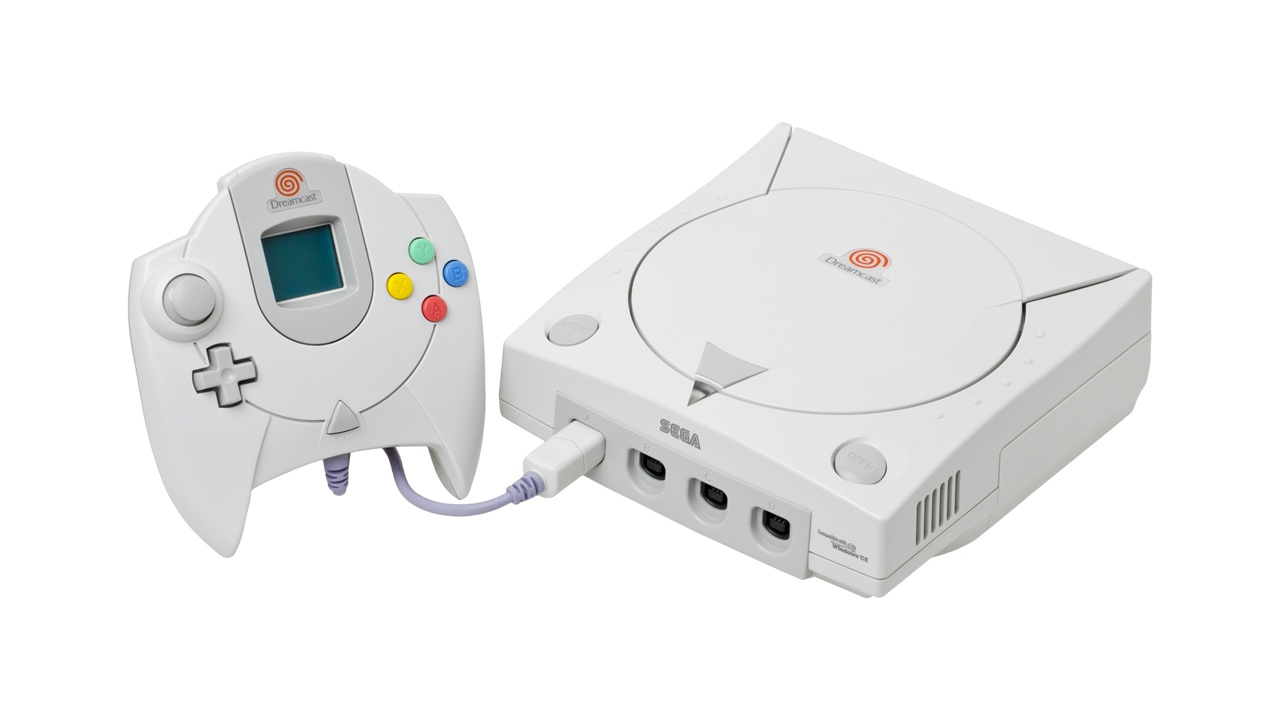Due to the abysmal performance of Sega's disastrous Saturn console, and not long before its premature cancellation, Sega set about development of their next generation of video game hardware. In an effort to cut costs, and to make sure that the Saturn's successor would be easy to create games for, Sega opted to use preexisting, off-the-shelf PC components and a custom Windows operating system, in favor of more complicated proprietary options. The new console would also share architecture with Sega's own NAOMI arcade hardware, which was developed around the same time, thus all but ensuring it would be the recipient of a steady stream of home-playable arcade hits, pretty much from day one. Finally, Sega decided to give the system a built-in modem for online play and internet access, the first console to include such a feature.
After finalizing the hardware specifications, a public contest was held by Sega to name their new system and "Dreamcast" was selected out of more than 5,000 entries. In order to avoid the same anemic launch that the Saturn had suffered, Sega took steps to have plenty of Dreamcast games available to choose from when the console made its North American debut on 09/09/1999. Sega also acquired American sports game developer Visual Concepts to ensure that the system's library would be adequately stocked with a variety of great sports titles, both at launch, and over the months and potentially years to follow. In addition (and as they did for all of the company's previous consoles), Sega's other internal studios all worked diligently to provide the Dreamcast with a multitude of high-quality first-party fare over the console's life.
Despite making a number of savvy decisions with the design and launch of the Dreamcast, Sega was ultimately unable to sell enough systems to cover their past losses on the Saturn. Nor were they able to gain enough market share to turn the tables on Sony and Nintendo. Eventually, the Dreamcast also began to burden Sega with losses and so, just over a year and a half into its life, they reluctantly exited the console industry altogether. It is said that the candle that burns half as long burns twice as bright. That may have been true in the Dreamcast's case. It's difficult to name another console that was able to amass such an amazingly diverse library of incredible titles over such a short run. Please read on for a list of the very best of these games to ever have graced Sega's final console.
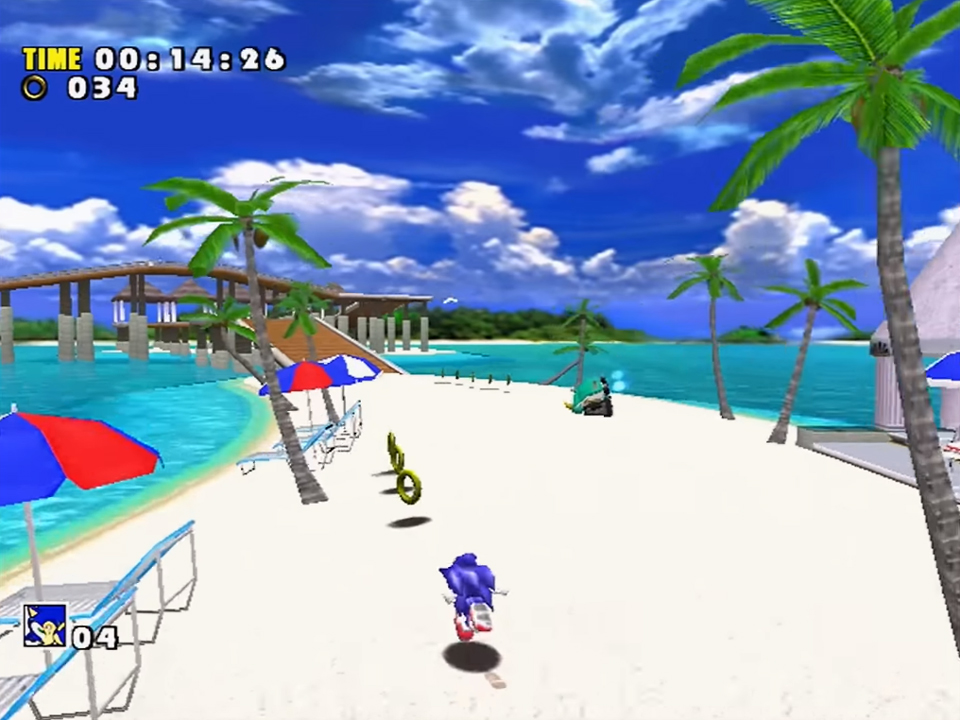
Sonic Adventure (Sonic Team, 1999)
As discussed in my Saturn Retrospective a few years ago, one of Sega's many missteps with that console was not ever having a true Sonic the Hedgehog sequel available for it. Not only did rival Nintendo make a new Super Mario title for their Nintendo 64 console, they made absolutely sure to have it ready in time for the system's launch (which was much more successful than the Saturn's, by the way). Thankfully, Sega seemingly got a clue and made sure to do have a proper Sonic title ready in time for the Dreamcast's launch; and Sonic Adventure was arguably the most hyped up game of their new console's launch.
With good reason, too. As there had been no entry on the Saturn, it constituted the first mainline installment since 1994's Sonic & Knuckles for the Genesis. Additionally, it was the first mainline 3D installment, and just as Nintendo had succeeded with Mario's transition to 3D, Sega, too, was also able to find success with Sonic's. Sonic Adventure was a great-looking, technically impressive, and most importantly, fun to play game. It also was the recipient of much critical acclaim and helped to give Sega's Dreamcast launch a much-needed kickstart.
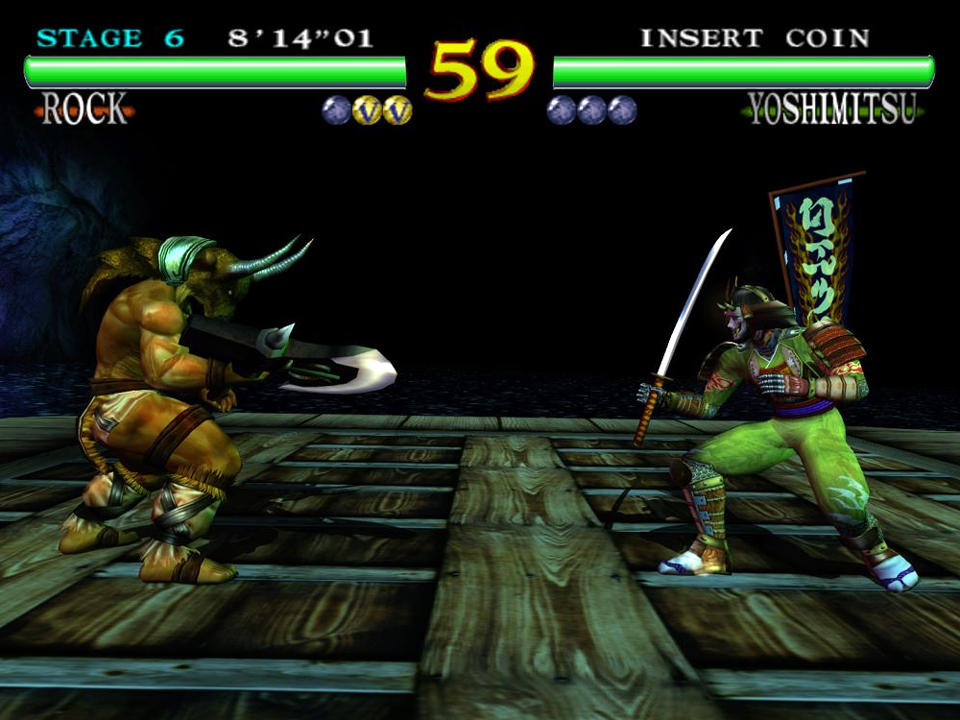
SoulCalibur (Namco, 1999)
If Sonic Adventure got the hype train rolling in the lead-up to, and during, the Dreamcast's launch, then SoulCalibur surely kept it going for a good while after. Over its criminally short lifespan, the Dreamcast found great appeal amongst its supporters as something of an affordable home arcade system. But while many of the hits that would make their way to the console were either right on par with, or very nearly as good as their actual arcade counterparts, few were actually better. SoulCalibur happened to be one of those few.
Publisher/developer Namco decided to go above and beyond for the home release of their own already outstanding 3D-fighting arcade game, and somehow managed to make it even more impressive in the process. Not only did the already fantastic graphics receive a notable upgrade, but Namco saw fit to include a plethora of welcome options and modes that arcade goers could only dream about. The result was a legendary once-in-a-generation type game that managed to stand head and shoulders above all others - - arcade, home console, PC, all of them.
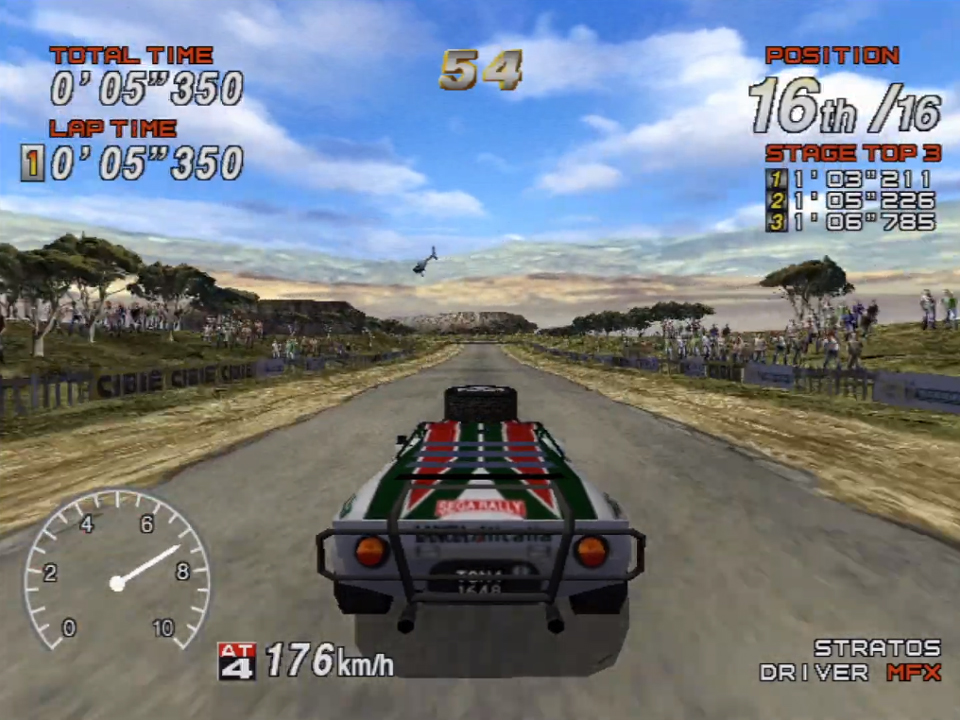
Sega Rally 2 (Sega, 1999)
Of the fair number of great racing and vehicle-based games that graced the Dreamcast during its brief history, Sega Rally 2 would arguably be considered the taker of the checkered flag. That's because the Dreamcast version of Sega Rally 2 offered up a near-perfect home conversion of the outstanding arcade release. Some might say better even, considering the extras it included, like an additional Championship mode and all new tracks to race on. Sega Rally was well-received by game critics and racing fans alike and was praised for its beautiful graphics, excellent modes and options, and incredibly fun racing. Though Sega Rally 2 sadly never saw any ports (save one to the PC, some months later), it did pave the way for the equally enjoyable sequel(s) of Sega Rally Revo/3 in 2007/8.
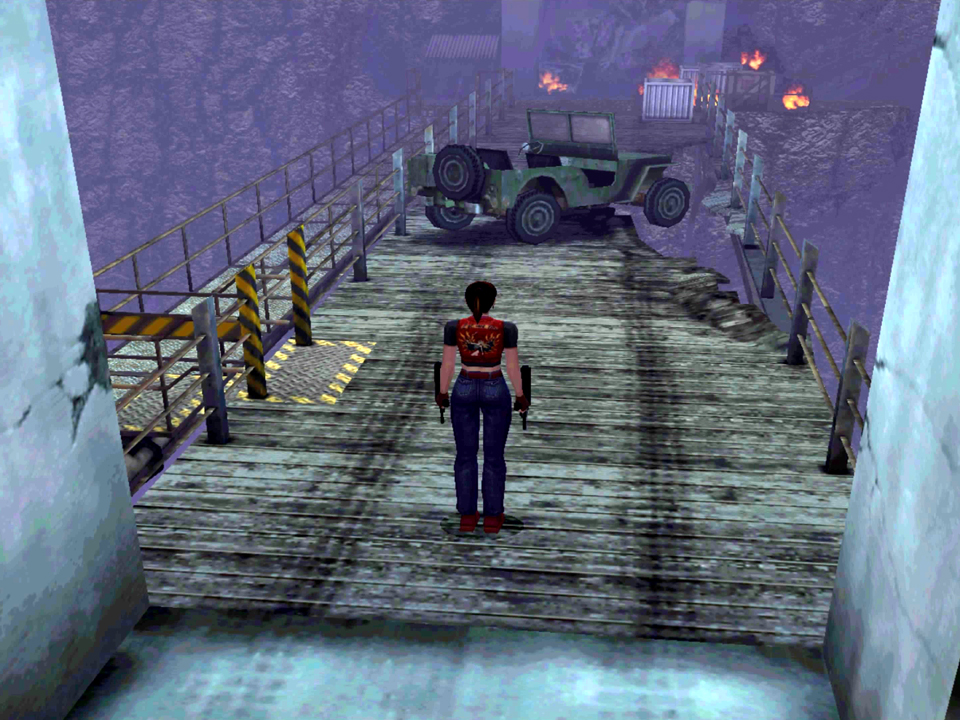
Resident Evil - Code: Veronica (Capcom, 2000)
Capcom made many incredible contributions to the Dreamcast's very respectable library over the console's criminally short run, including two of the finest fighting games they've ever released anywhere (which we will get to in a moment). As if that wasn't already more than generous enough, Capcom also saw fit to grace the console with a superb installment to their wildly popular Resident Evil series. Although the game may have released without a number attached to the title, Resident Evil - Code: Veronica was originally intended to be a direct sequel to 1998's Resident Evil 2. Resident Evil 3, on the other hand, had been meant to serve as a spin-off game with a different title but, before release, was "promoted" to a numeric installment after Capcom decided to keep the PlayStation entries consistent.
Despite the lack of a numeric value in the title, there was no denying the value of the game itself in the eyes of critics, series fans, and grateful Dreamcast owners at the time. Code: Veronica was highly praised upon release, particularly for it's movie-like cinematics, real-time backgrounds, and cutting-edge graphics. Sadly, despite its incredibly positive reception, the Dreamcast release didn't sell as well as Capcom had initially hoped, and they would later port Code: Veronica to the PlayStation 2 and GameCube (and eventually other platforms as well), but not until after the Dreamcast's tragically short run had already come to an end.
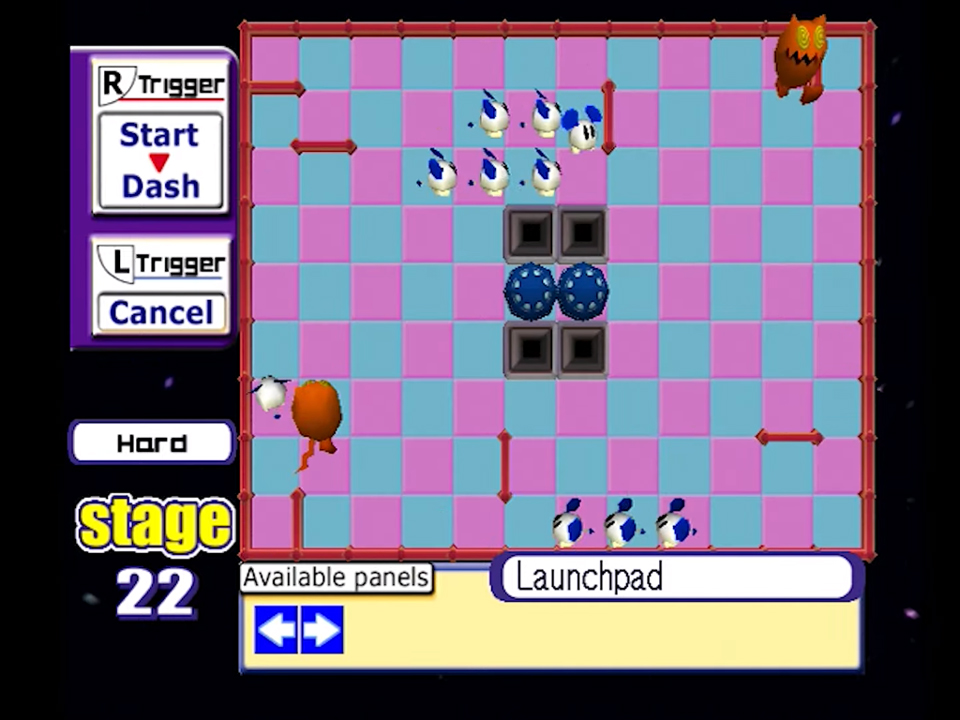
ChuChu Rocket! (Sonic Team, 2000)
ChuChu Rocket! was an action-puzzle game from Sega's own Sonic Team. Directed by Sonic the Hedgehog creator, Yuji Naka, the game was devised as a way to push the processing power of the Dreamcast to its fullest. The premise of the game revolved around attempting to guide (sometimes dozens of) space mice, the titular ChuChus, around various top-down stages and into awaiting space ships whilst having them avoid hungry space cats and other perils. ChuChu Rocket! offered a compelling assortment of multiplayer modes to choose from and was praised for its addictive gameplay, unique aesthetic, and budget retail price. The title was considered a more-than-welcome addition to the Dreamcast by enthusiasts of puzzle games and/or all things quirky, and versions of ChuChu Rocket! would eventually find their way onto the Game Boy Advance and even the Apple Store!
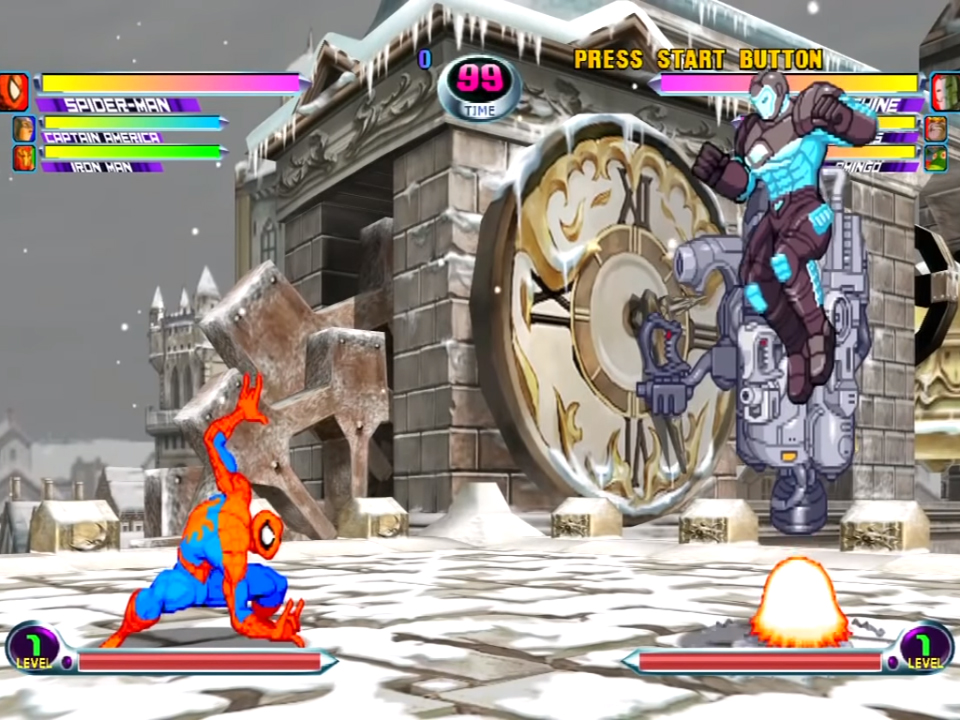
Marvel vs Capcom 2 (Capcom, 2000)
Like Namco, Capcom was no slouch when it came to crafting both brilliant arcade fighting games and equally brilliant home ports of those arcade titles. For years prior to them actually titling the games as such, Capcom had developed numerous titles in their excellent Marvel and/or Marvel vs Capcom fighting series. Finally in 1998, the series culminated in that very nominal inevitability. That first Marvel vs Capcom game represented the finest elements that the series had to offer, brought together in some often outstanding and occasionally outlandish 2 on 2 fighting brilliance.
The 2000 follow up, Marvel vs Capcom 2, was essentially more of the same, but bigger. Much bigger. First, Capcom increased the roster from a measly 15, to a mind-boggling 56 selectable characters! They also upped the ante by converting the assist character role in the first Marvel vs Capcom to an additional playable character in part 2, taking the gameplay from 2 on 2 with an assist to fully 3 on 3 character fighting action.
Both games constituted superb additions to the Dreamcast library, and both were also briefly exclusive on the system before being ported to rival systems. Between the two of them though, it was the second game's much bigger roster of fan-favorite selectable characters, and its spectacular 3 on 3 fighting; not to mention its much longer exclusivity period (it would remain so for over a year and a half after the Dreamcast was discontinued by Sega), that made it, not only the arguably superior Marvel vs Capcom game, but one of the most indisputably boastworthy titles a Dreamcast owner could possibly possess.
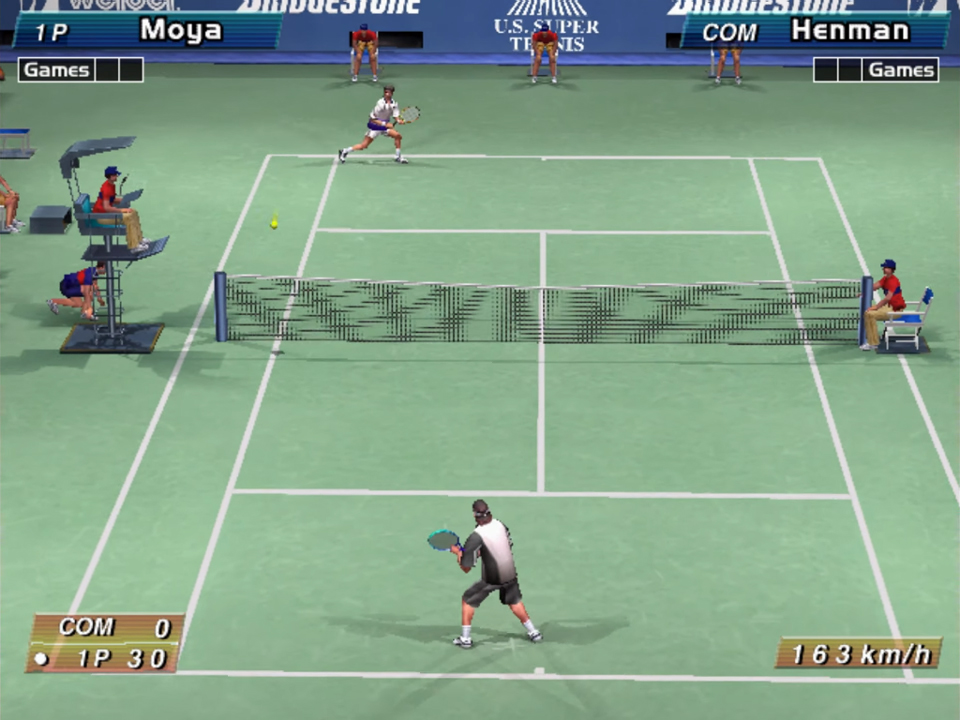
Virtua Tennis (Sega AM3, 2000)
Following the accomplishments of their Virtua Striker arcade soccer series in the last '90s, Sega greenlit the development of a new sports title in order to see if some of that same success could be captured with Tennis. Particular care was taken to try and ensure that the game would be accessible to, and enjoyed by, both casual and competitive players alike. Even before the title was ready for release, Virtua Tennis was already seeing positive reception by internal testers, which helped development progress with relative ease.
Upon release, both the arcade version, and the Dreamcast port that soon followed, enjoyed near universal acclaim. Critics especially complimented the game for its beautiful graphics, deep gameplay, and excellent multiplayer. The Dreamcast version of Virtua Tennis was (and still is) regarded as one of the finest sports titles ever to appear on the system and the game would eventually see several excellent ports and sequels as a testament to its own accomplishments.
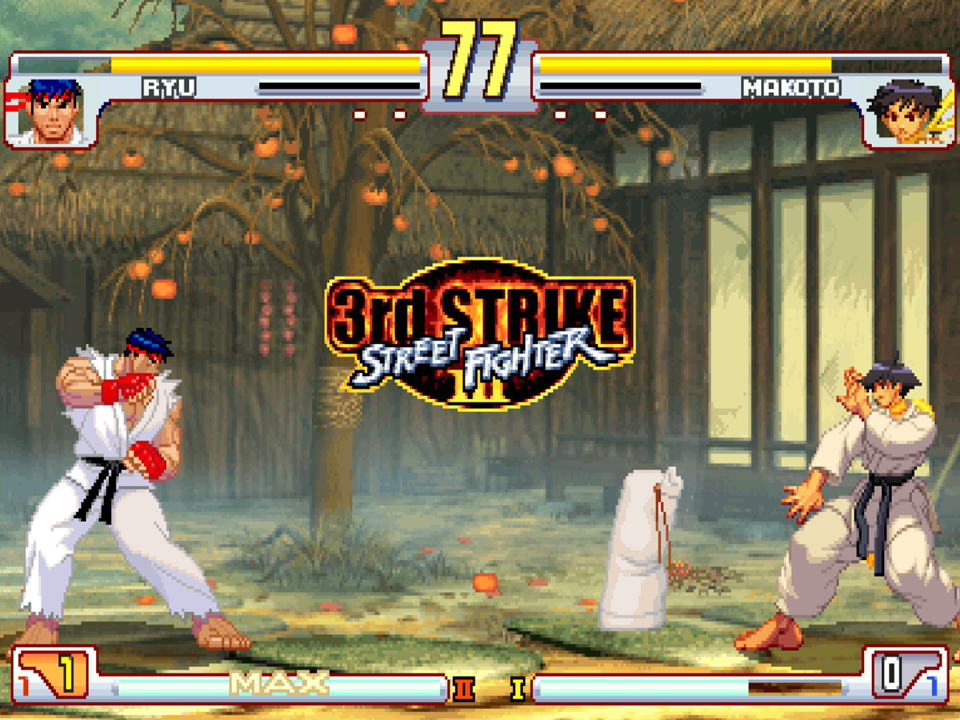
Street Fighter III: 3rd Strike (Capcom, 2000)
It could easily be argued that the Dreamcast was the greatest console ever released with regards to its fighting games. Not only did it boast the previousl-mentioned SoulCalibur and Marvel vs Capcom 2, but for several years (thanks to Capcom again), the Dreamcast was also the exclusive home console of Street Fighter III: 3rd Strike. A game that still to this day is regarded in many circles as the single greatest 2D fighting title ever created. Unfortunately for Sega, it did take a little while for some fighting game enthusiasts to realize just how legendary 3rd Strike actually was. By then, the Dreamcast's fate had already, sadly, been sealed. But be that as it may, both the console and the game, will always have their shared, and rightly-deserved, place in gaming history.
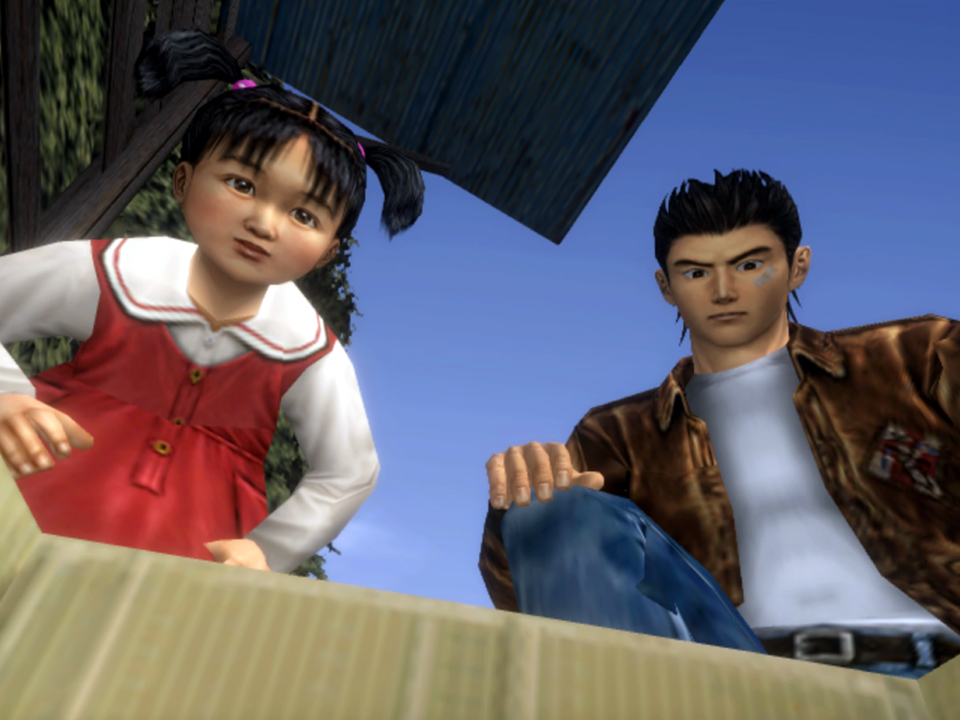
Shenmue (Sega AM2, 2000)
After years of creating such legendary Sega arcade titles as Out Run, Space Harrier, and After Burner, famed game developer Yu Suzuki decided to begin working on a console-only spin-off of another of his massive arcade hits, Virtua Fighter. While the game originally began its development as a Saturn RPG starring VF character Akira Yuki, it would eventually morph into a non-Virtua Fighter-related action-adventure/detective sim for the Dreamcast. The story of Shenmue was changed to instead focus on a teenage martial artist named Ryo Hazuki who sets out to track down his father's killer. That's not to say that the Virtua Fighter influence was dropped entirely, however, as the fighting engine in the finished product still bore a striking resemblance to the incredibly popular arcade series.
Shenmue was extremely ambitious for the time and included a detailed model of an actual Japanese town, realistic day/night and weather cycles, and a cast of over 300 fully-voiced characters. The game received rave reviews upon release, and was particularly praised for its incredible production values, impressive graphics, and ridiculous sense of immersion. Sadly, the overly ambitious nature of the title came at a high price, literally. Even despite showing some fairly respectable sales numbers, Shenmue still ended up being regarded as a financial failure for Sega. But the game did manage to have a profound influence on the industry, giving rise to two eventual sequels, as well as two whole spiritual sequel franchises (in those of Sega's own largely-similar Yakuza and Judgement series). Additionally, Shenmue was also clearly a major source of inspiration for open-world game design in general, particularly in that of the numerous Rockstar titles that have since followed it.
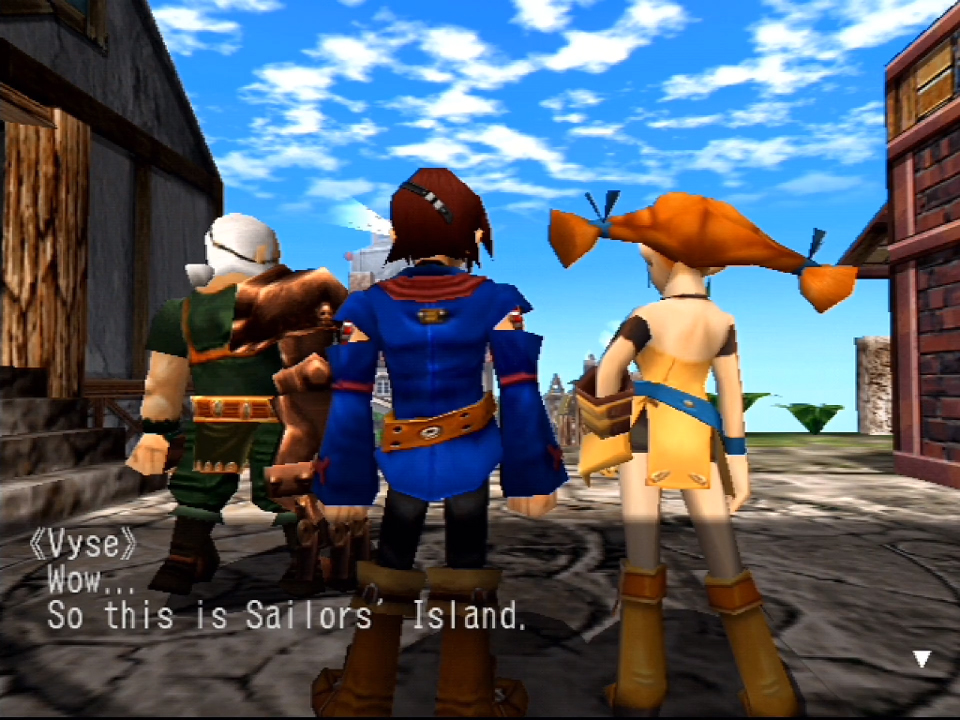
Skies of Arcadia (Overworks, 2000)
If you've never played Skies of Arcadia before, the first thing you should understand is that, not only is the game arguably the finest RPG to ever grace the Dreamcast (and there were multiple good ones), it's also one of the greatest games ever made. But really, it's little wonder why. After all, the game was created by an all-star development team whose various staff members had previously worked on such legendary Sega titles as Panzer Dragoon Saga, Phantasy Star 1, 2, and 4, and the first four Sonic the Hedgehog games.
The team strove to differentiate Skies of Arcadia from other RPGs of the time (like Final Fantasy VII and VIII), by focusing on simple and fun game mechanics, and a brighter, more cheerful world filled with expressive faces to better convey character emotions and personalities. The game received quite a bit of praise upon release with particular acclaim being given to the game's incredible visuals, great story, fantastic characters, and excellent soundtrack. Sadly (and even despite receiving a GameCube port in 2003), sales of the game were somewhat underwhelming and the title remains, to this day, one of the most underrated hidden gems in video game history.
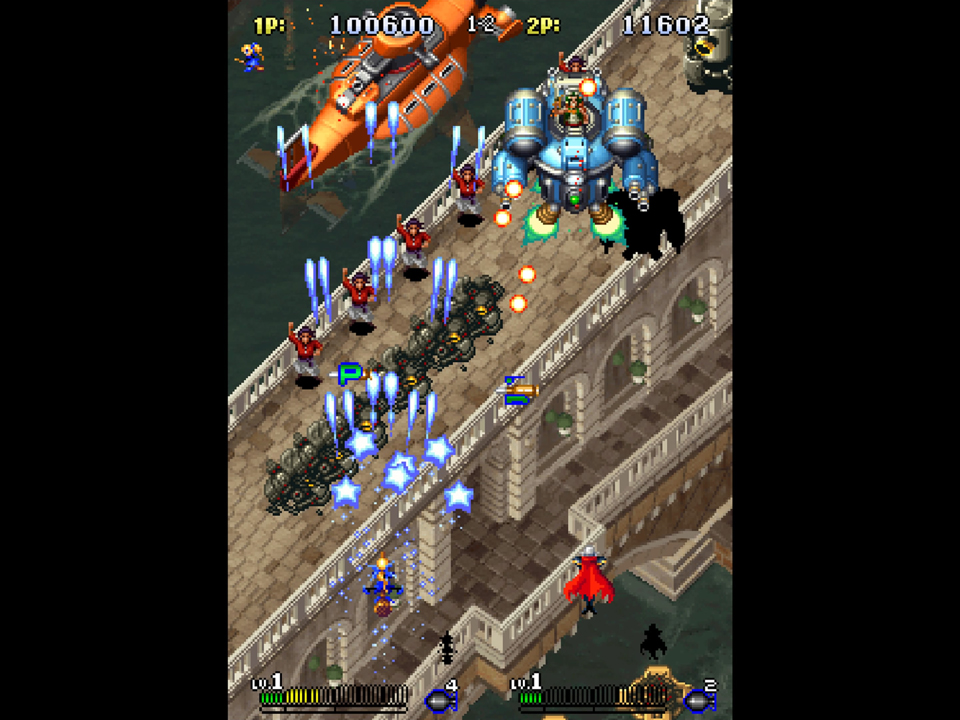
Gunbird 2 (Psikyo, 2000)
Just as it did with fighting games, so too was the Dreamcast fortunate enough to sport an almost staggering number of excellent arcade shoot-'em-up ports. Though, unlike with the fighting titles, many of those "shmup" releases unfortunately never made it out of Japan during the Dreamcast's reign. One happy exception to this though was the outstanding top-down Psikyo gem, Gunbird 2. As was typical of Psikyo's arcade shooters of the time, Gunbird 2 boasted incredibly tight controls, beautiful sprite work, and thrillingly tough-but-fair shoot-'em-up action. The game also offered single and multiplayer modes and, as a result of being published by Capcom, even featured Morrigan Aensland, from their popular Darkstalkers fighting series, as one of the selectable character options. Though not every critic would be able to see past the game's challenging difficulty, the ones who could didn't hesitate to acknowledge that Gunbird 2 was absolutely one of the very best shoot-'em-ups to be found on the Dreamcast.
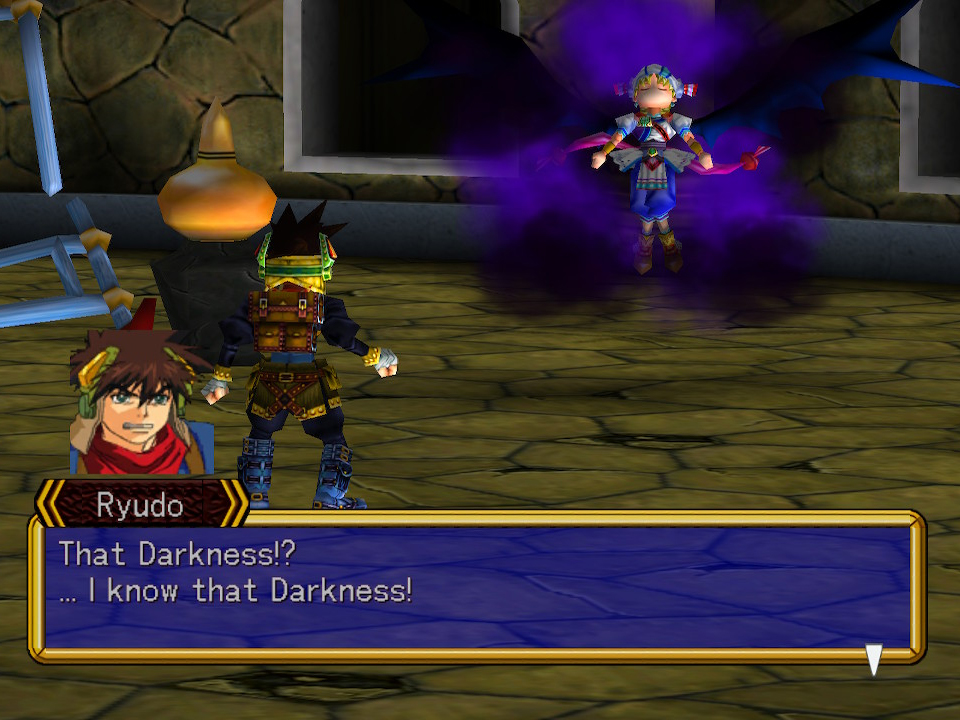
Grandia II (Game Arts, 2000)
Despite it never really having much of a shot at being the best RPG on the Dreamcast (thanks to the incomparable, aforementioned Skies of Arcadia), Grandia II still managed to pretty easily take the runner up spot. That's because the game boasted some fantastic-looking (for the time) fully three-dimensional graphics, a uniquely-engaging combat system, and an excellent soundtrack, courtesy of Noriyuki Iwadare (a composer whose credits also included the other Grandia games and the Lunar series). Unsurprisingly, Grandia II was met with considerable critical praise when it was released in late 2000 and even managed to earn a few special recommendations and awards from various publications. As one of the last great games to be released for the Dreamcast before Sega made the regrettable decision to bow out of the console business altogether, Grandia II constituted something of a swan song for the system. That being said, the game would eventually find its way to the PlayStation 2 and other platforms in the years following the Dreamcast's untimely demise.
Though Sega learned well from the many and varied mistakes they had made with their Saturn console, the damage was simply too extensive for them to have ever had much hope of recovering. That's not to say that their Dreamcast console wasn't a valiant or worthy effort. It absolutely was, on both counts. Sega made a number of incredibly smart decisions in how they handled both the system's design and launch; and as a result the Dreamcast left an indelible mark in the pages of gaming history.
The system is fondly remembered by many for the novel features it brought to the table, such as its internal modem, and it's miniature Game Boy-like controller attachable Visual Memory Unit. The Dreamcast was also home to a number of quirky peripherals like the maraca controllers for Samba de Amigo, the fishing rod controller for Sega Bass Fishing and Sega Marine Fishing. There was even a twin-stick controller for Virtual-On: Oratorio Tangram, but sadly, that device was never released outside of Japan. But the legacy of the Dreamcast was most strongly demonstrated by the incredible depth and variety of its library of games. From the truly bizarre titles, like Seaman, to the many outstanding games such as those listed above, and everything in between. Though the Dreamcast may have had its amazing run end far too soon, it will always live on in the memories of those who were there to witness its glorious time in the sun.
(This is a repost of an article that also appeared on 12/12 Games.)
[Images: Sega, Namco, Capcom, Psikyo, Game Arts]

